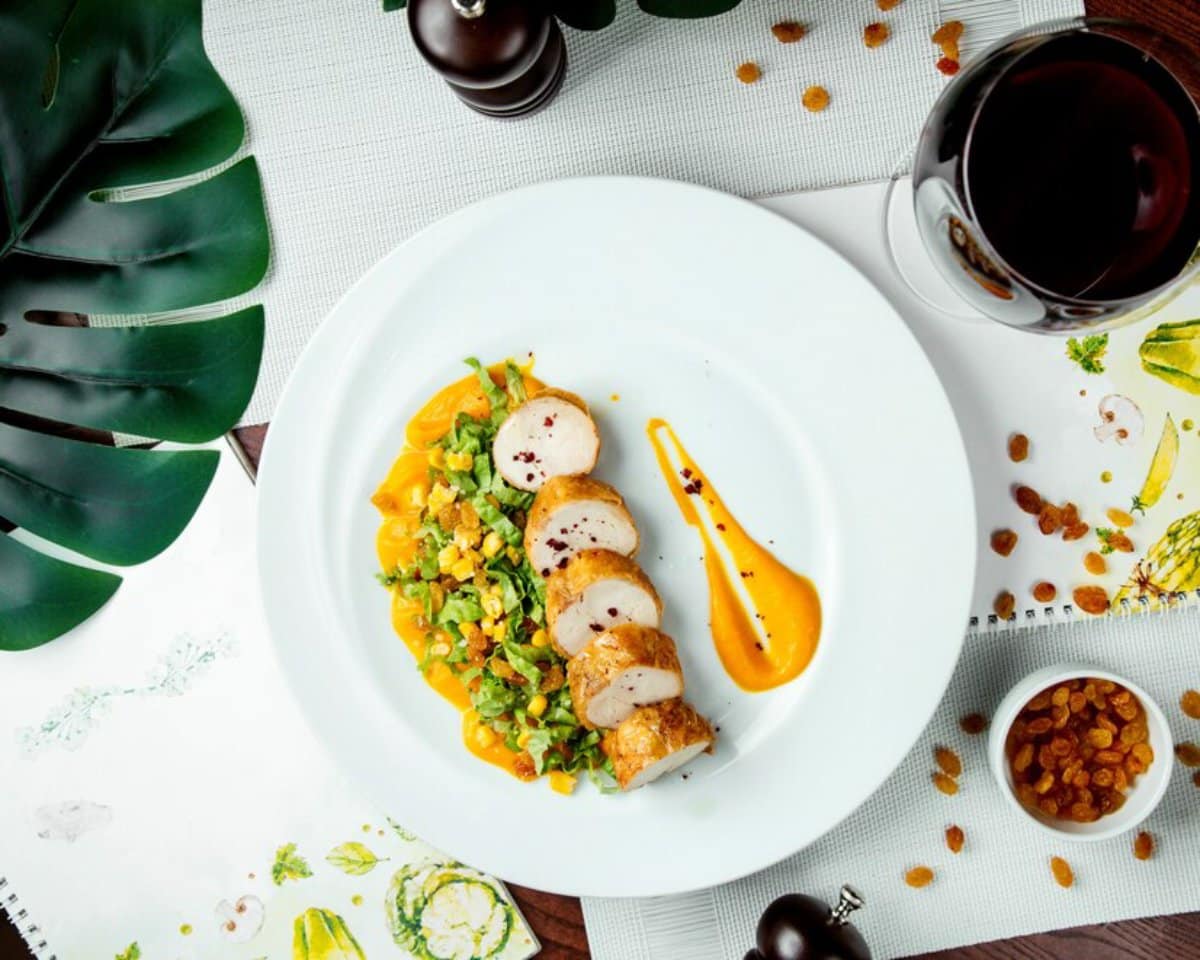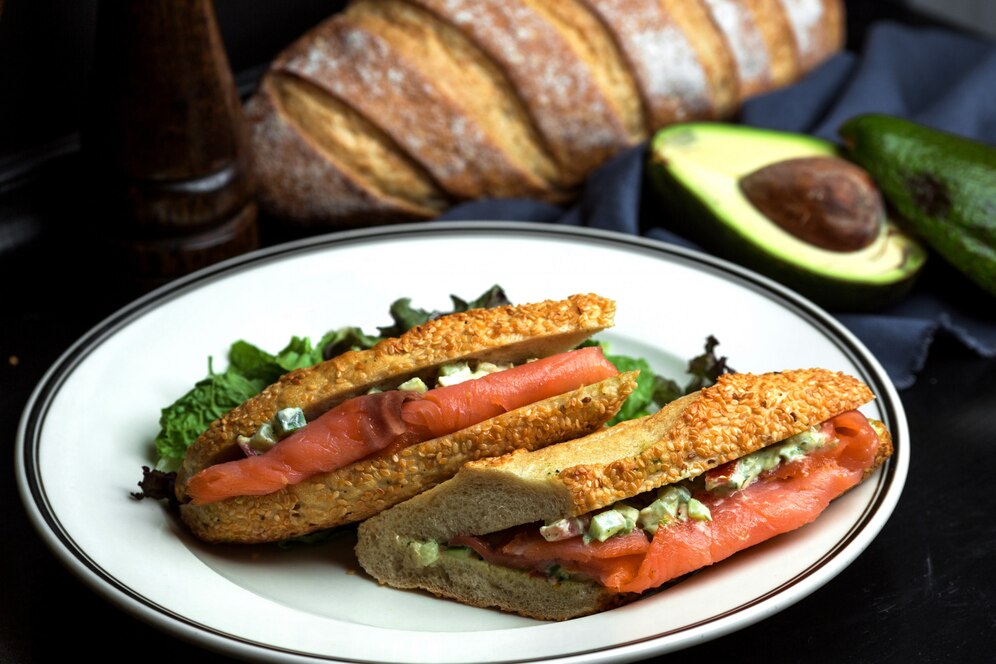
How to Prepare Gluten-Free Gourmet Foods
Preparing gourmet gluten-free foods is an art form. It needs creativity, precision, and ingredient knowledge. Gluten-free meals can be tasty for health or others. You can prepare restaurant-style foods at home without compromising on taste or texture.
Gluten is a protein in wheat, barley, and rye. For individuals with gluten intolerance or celiac disease, it is necessary to avoid gluten. Gluten-free cooking, however, is not merely the exclusion of gluten. It is about adding flavour, trying substitutes, and creating delicious meals. This book will assist you in becoming a gluten-free gourmet chef. We will cover ingredient selection and how to plate like a pro.
Pro Tip from Experts: Always read ingredient labels carefully. Gluten can hide in unexpected places like sauces, dressings, and processed foods.
Quick Guide to Gluten-Free Gourmet Cooking
- Use naturally gluten-free foods like fresh vegetables, meats, seafood, and dairy.
- Use high-quality gluten-free options instead of wheat products. Try almond flour, quinoa, and rice.
- Boost flavours with herbs, spices, and fresh ingredients to keep meals tasty.
- Thicken soups and sauces correctly using cornstarch, arrowroot, or tapioca starch.
- Prevent cross-contamination using distinct cookware and utensils.
- Master gluten-free baking by becoming proficient in flour blends and binding agents.
Important: Always look for gluten-free certification on prepared foods to ensure safety.
Core Concept: The Science and Art of Gluten-Free Gourmet Cooking

Gluten-free cooking is a dance in the kitchen, not a substitution game. The mastery of ingredient relations is key to this taste choreography. By using the proper technique, you can prepare gourmet classics gluten-free. This will enable you to taste and enjoy their wonderful texture and flavour.
Principal Conceptualizations of Gluten-Free Gourmet Cooking
- Ingredient Insight: Understanding your ingredients is like being on a treasure map of food. Certain foods are naturally gluten-free treasures. Fresh fruit, vibrant vegetables, succulent meats, and rich dairy are all perfect examples. Others may need a sneaky substitute to keep the journey going.
- Texture Victory: Gluten works its magic of elasticity and structure into baked delights. Chefs combine substitute flours with eggs, xanthan gum, and psyllium husk to create similar delights. This magical combination assists in recreating favourite textures.
- Flavour Concerto: Gluten-free ingredients play a unique tune compared to wheat ones. Add zesty herbs, bright citrus, and umami-rich foods for a flavorful mix.
- Cross-Contamination Warning: A single crumb of gluten can mean disaster for the intolerant. Therefore, a strict gluten-free kitchen is essential to ward off culinary disasters.
- Presentation Perfection: Gourmet foods are in need of a stage as stunning as their taste. Beautiful plating and smart garnishes make each bite special. They turn a meal into a memorable experience.
Step-by-Step Guide to Cooking Gluten-Free Gourmet Foods
1. Choose Premium, Naturally Gluten-Free Ingredients
- Fresh fruits, seafood, meats, and dairy are gluten-free naturally.
- Gluten-free grains such as quinoa, rice, buckwheat, and millet waltz around wheat.
- Gourmet gluten-free pasta and bread substitutes heighten every dish’s charm.
2. Learn the Art of Gluten-Free Flour Blends
- A single gluten-free flour can’t replicate the wizardry of wheat.
- Make a blend with almond, coconut, oat, rice, and sorghum flours.
- Leverage binders like xanthan gum or psyllium husk for structure.
3. Make Flavor-Full Sauces and Dressings
- Thicken your sauces with cornstarch, arrowroot, or tapioca starch—bye-bye to the wheat roux.
- Replace soy sauce with tamari or coconut aminos for a gluten-free flow.
- Make deep reductions with wine, butter, and stock for added flavour.
4. Conquer Gourmet Gluten-Free Pasta and Grains
- Choose high-quality gluten-free pasta made from quinoa, rice, or chickpeas.
- Maintain textures in balance—no mushy fear.
- Rinse quinoa thoroughly before cooking to eliminate bitterness; steam rice to perfection.
5. Master Gluten-Free Baking and Desserts
- Mix almond flour, tapioca starch, and rice flour for baking success.
- Employ eggs, mashed bananas, or flaxseed and water mixed as binders.
- Beat eggs and sugar hard to introduce air, keeping treats light.
6. Add Presentation for a Gourmet Finish
- Employ artistic presentation skills—think stacking, drizzling, and garnishing.
- Select vibrant vegetables and edible flowers to dazzle visually.
- Serve in elegant dishes to enhance the entire dining experience.
Best Practices & Additional Insights
- Savor Fresh, Seasonal Goodness: Dive into a vibrant medley of produce and herbs. Every bite is full of unforgettable flavours and textures that delight your palate.
- Create a Gluten-Free Sanctuary: Design a pantry with gluten-free goodies. Source certified oats, tamari, almond flour, and gluten-free pasta for cooking escapades.
- Discover Global Flavor: Travel to the world where gluten-free bliss is found. Try the tasty Mexican corn tortillas, enjoy Thai rice noodles, and savour hearty Indian lentil soups.
- Experiment and Fine-Tune: Gluten-free food is a canvas waiting for you to make it your own. Play with proportions and timing to turn your meals from ordinary to amazing.
- Take Ideas from Master Chefs: Borrow the genius of gluten-free master chefs for ideas. Their clever recipes and amazing presentations will fan your culinary fires.
FAQs
- How can I avoid gluten-free baked foods becoming dry?
- To prevent dryness, add moist treats such as yoghurt, applesauce, or honey.
- What is the most effective gluten-free flour for bread-making?
- A combination of almond flour, tapioca starch, and psyllium husk makes chewy perfection.
- How do I prepare a gluten-free roux to thicken sauces?
- Mix up a roux using butter and cornstarch, arrowroot, or tapioca flour.
- Can I use gluten-free pasta in all recipes instead of regular pasta?
- Of course! Just mind the cooking time; gluten-free pasta becomes mush.
- How do I avoid gluten contamination in my kitchen?
- Have distinct cutting boards and implements for gluten-free foods; deep-clean common surfaces.
- Can I purchase store gluten-free blends as a replacement?
- Yes, commercial blends work perfectly fine, but homemade products are perfect bespoke possibilities for foods.
- All oats are gluten-free, correct?
- No! Only approved certified gluten-free oats are wheat contamination risks normal oats.
- How do I upgrade gluten-free meals to gourmet?
- Enhance your dishes with finer ingredients, sophisticated presentation, and delectable texture layers.
Conclusion: Take Your Gluten-Free Cooking to the Next Level

Setting out on the quest for gluten-free gourmet cuisine is well worth the effort. It combines health-aware decisions with the sophistication of elegant culinary artistry. Using high-quality ingredients and learning about gluten-free techniques, you can take your cuisine to new heights. With practice and imagination, gluten-free cooking unlocks a universe of flavour and texture. Indulge in the quality of fine dining without leaving home!